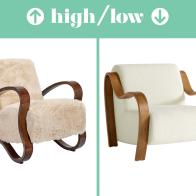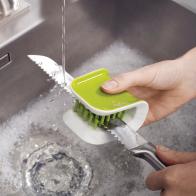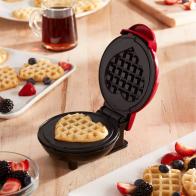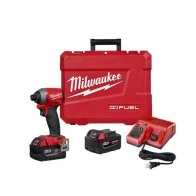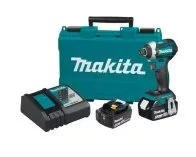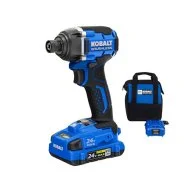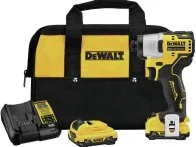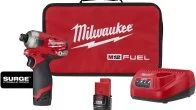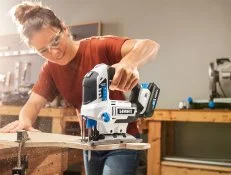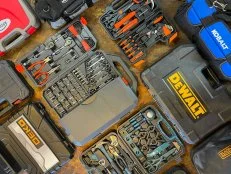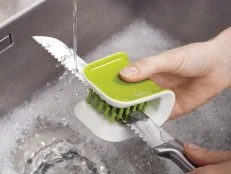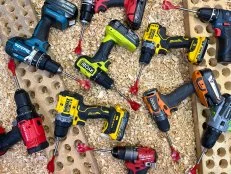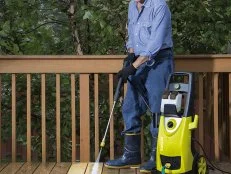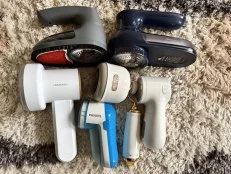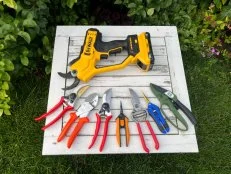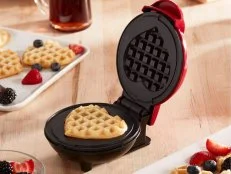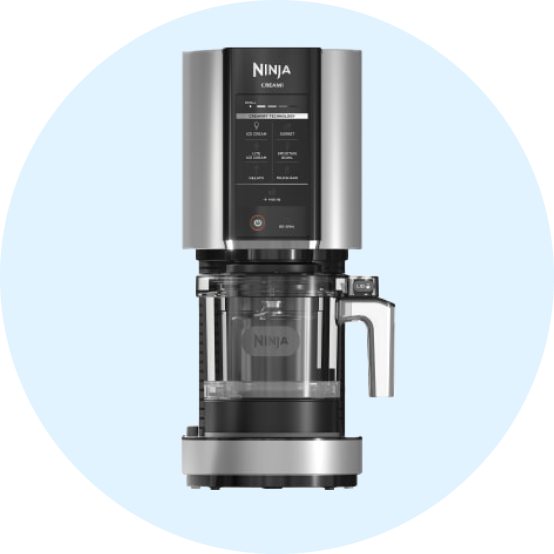5 Best Impact Drivers of 2025, Tested and Reviewed
Don’t think of impact drivers as specialty tools for pros. These drivers make short work of sinking big screws, helping out around the house and during your building projects.
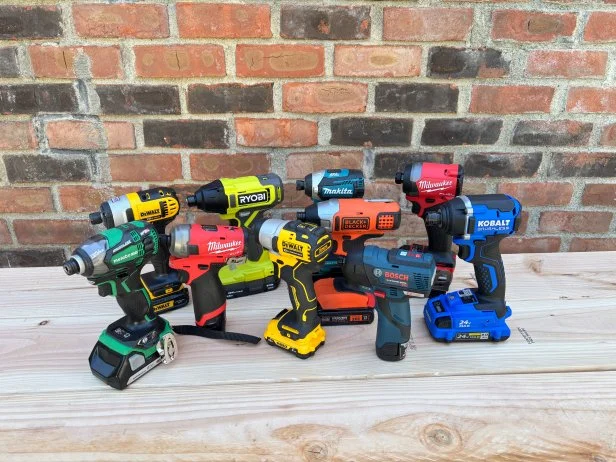
Sal Vaglica
The impact driver is the heavy hitter on the block that plays the perfect counterpoint to a traditional drill. With its adjustable clutch and variable speed trigger, a drill is all about dialing in the control so you don’t strip screws yet spins fast enough to blast holes in wood relatively quickly. But if you’ve ever tried sinking 3-inch deck screws with one you know there’s a lot of leaning onto the tool to ensure the bit doesn’t slip out of the fastener and even then, it’s not always easy.
Setting big screws with minimal effort is what an impact driver is designed for. Inside the tool, a spring compresses an internal hammer — a round steel plate — that pounds the bit forward as the screw or drill bit you’re working with rotates. In exchange for some vibration in the hand, and a bit of noise, DIYers can drive long screws, structural fasteners, and big lag bolts quickly, without stripping. When these tools first came out, they were all single-speed, which made controlling them a steep learning curve even with a variable speed trigger. But now, most have selectable modes that vary the amount of impact so you can match the torque to the job at hand, and rotate fast enough to drill holes.
Below, we've chosen our top impact drivers according to testing and explained what to consider when shopping for one of these tools. After sinking 850 screws, drilling dozens of holes, and driving a box worth of lag bolts, we’ve determined which impact drivers are the best.
Our Top Picks for Impact Drivers
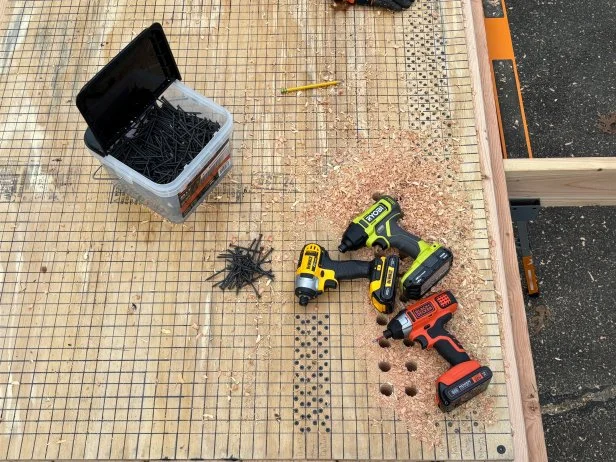
Sal Vaglica

Sal Vaglica
How We Tested
To find the best cordless impact drivers, we compared 10 different options, from 24 to 12 volts, with positive customer reviews from various brands. We tested each impact driver for run time, power, size, value, ease of use, and overall capability.
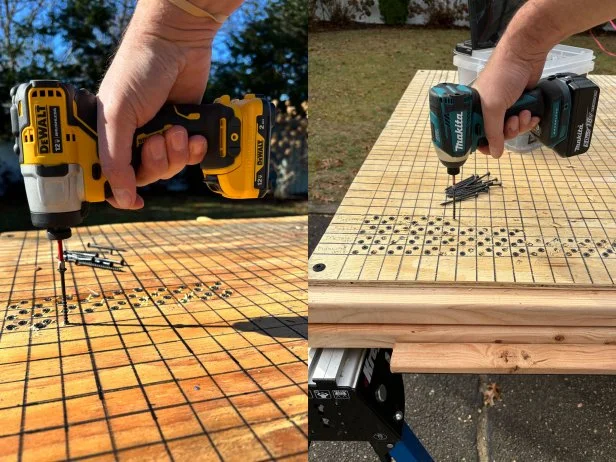
Sal Vaglica
To test how easy it is to control the power of the impact driver we sank drywall screws through a 3 ½-inch thick combination of 2x6s and plywood. These 3-inch long fasteners, like all drywall screws, are brittle and susceptible to snapping with a Philips head that is prone to stripping. We drove 20 screws, then let the tool rest for about 10 seconds, before continuing until we reached 100, for the tools with 18 volts or more, or 50, for the 12-volt options. This test highlighted the utility of the impact drivers in handling delicate work as installing and repairing drywall is a common task DIYers drivers for.

Sal Vaglica
To test the speed of each impact driver’s ability to drill holes we fitted each with a 1-inch spade bit, then drilled through the 3 ½-inch thick work surface. This strenuous test proved easy for some drills, while serving as a challenge for others.
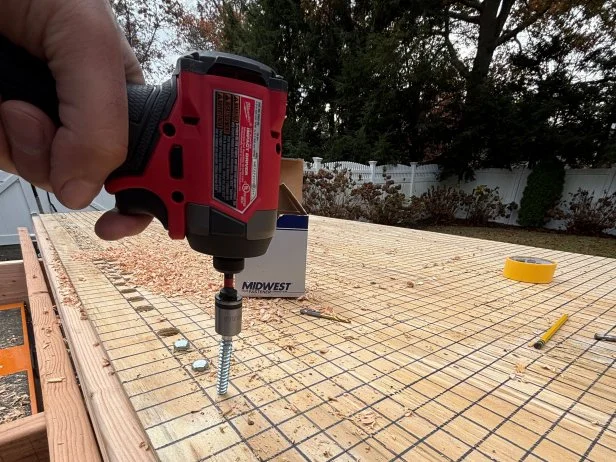
Sal Vaglica
To evaluate the power, we tasked each impact driver with sinking 3/8 x 3-inch lag bolts, after drilling a small pilot hole, completely in the work surface. This test demonstrated the raw power of each tool to sink the fastener without leaning body weight onto the tool.
When it came to run time, we evaluated the longevity of the battery by performing the above tests in rapid succession: first the 3-inch long drywall screws, then onto the 1-inch wide spade bit, and finally as many lag bolts as possible until the battery quit. If the battery drained before making it to the lag bolt test, we noted the shortcoming and then recharged the batteries to ensure the tools could sink these large fasteners.
Note: The impact drivers we tested, like most cordless tools, feature different voltages with batteries packing varying amp hours. Every power tool brand offers a range of batteries that will fit these tools, meaning, run time will be improved by upgrading to a power pack that offers more amp hours. We simply tested each impact driver with its included battery.
- Plenty of power
- Comfortable handle
- One-handed bit insertion
- Great LED work light
- Intuitive mode selection
- Expensive
- Heavy
- Recharge time isn’t the fastest
The Milwaukee 2853-22 aced each of our tests. The power was always up to the task of sinking 10 lag bolts, even after drilling as many holes and driving 100 screws. The M18 Fuel was also easy to control, allowing us to find the right amount of impacts per minute (IPM) for the job. The clear and intuitive dashboard at the base of the handle offers four levels of power. On its lowest setting, the Milwaukee offers 1,400 IPM for projects where you want maximum control to drive, or remove, delicate screws like those on cabinetry hardware or a door’s lockset. But you can bump up to 3,600 IMP, for most daily tasks like attaching drywall, or top out at 4,300 IMP, with 2,000 in-lbs of torque, for the heaviest duty jobs.
A fourth mode, indicated by a Philips head screw icon, is for self-tapping screws. A few impact drivers offer this mode which prioritizes speed, rather than impacts, to spin fasteners quickly enough that they bite into metal, which is a task often associated with HVAC equipment.
In the drywall test the Milwaukee, set to maximum power, sank the screws quickly without damaging them. While the housing got a bit warm at the 80-screw mark, by the time we sank the hundredth fastener, we’d used only a quarter of the 18-volt, 5-amp hour battery. The ring of LEDs around the chuck was bright and did a nice job of illuminating work surfaces. After the screws, we blasted through the spade drilling test, punching 10 holes in rapid succession without losing much battery power. It was only after setting the last 3-inch lag bolts that the power pack dropped to half capacity. The entire time the Milwaukee was easy to control and the hammer function never vibrated excessively.
The tool is comfortable, especially for those with large hands. The M18’s body is very short — less than 5 inches from front to back — which provides good access in tight spots. If you tend to swap out bits a lot, you’ll appreciate the one-handed bit insertion. This feature locks onto hex-shanked drill or driver bits by simply pressing those in whereas other brands require a two-handed operation to pull back the collet first (you will need two hands to remove the bit). Paired with two, 5.0-amp hour batteries the M18 is aimed at heavy use and it feels that way coming in at nearly 4 pounds. But Milwaukee offers a range of 18-volt batteries, some with as little as 2.0 amp hours, which, when paired with this tool would drop the weight under 3.5 pounds.
- Voltage 18 volts
- Amp hours 5.0 Ah
- Weight with battery 3.8 pounds
- Number of settings 4
- Recharge time 60 minutes
- Plenty of power
- Comfortable handle
- Great protection against scuffing finished surface
- Expensive
- Confusing mode selection
The XDT14T was just as powerful as the Milwaukee and a good choice if you’re already invested in Makita’s 18-volt platform. As with most of the impact drivers we tested, you can buy them as a bare tool taking advantage of the battery you already own. Even when fitted with the included 5 amp-hour battery, the Makita weighed in at less than 3 1/2 pounds, and the grip, while a bit shorter than the Milwaukee, was comfortable and would be ideal for those with smaller hands.
During testing, it aced every parameter keeping pace with our winner in power, speed, longevity, and comfort. It wasn’t performance that bumped Makita from the top spot, but rather the confusing layout of the four modes on the dashboard above the handle. Where Milwaukee has an intuitive, numeric progression to the modes — 1, 2, and 3 — Makita employs letters. Select T for tightening mode to drive self-taping screws, which is only something we learned after consulting the owner’s manual. The H setting represents hard, which calls in a maximum of 3,800 IPMs. The medium setting has 2,600 IPM and the softest uses 1,100 IPM. Makita has a slight edge over Milwaukee in the modes it offers: on its softest setting, it offers 1,100 IPM which makes it even safer to use on smaller screws.
- Voltage 18 volts
- Amp hours 5.0 Ah
- Weight with battery 3.35 pounds
- Number of settings 4
- Recharge time 45 minutes
- Excellent value that includes a 2-amp hour battery
- Comfortable handle
- Good performance for the battery pack provides
- One-handed bit insertion
- Tied for the second loudest tool tested
- Large, boxy shape
- Slow recharge time with 2-amp hour battery
Kobalt, which is Lowe’s in-house brand, uses a slightly higher 24-volt power pack to outperform a lot of the more expensive 18-volt tools. During testing the battery performed well right up until the second to last lag bolts, which is when the pack drained fully. But up until that point, the power was consistent and the driver was speedy though the included 2 amp hour pack drained to halfway after the last drywall screw. If you plan to use an impact driver often, this might not be the right tool, but for occasional weekend use, or for a new homeowner just starting a tool kit, this could be the ideal option that saves a few dollars.
Working with the Kobalt, we realized quickly that the build is bulky with lots of squared edges but not necessarily uncomfortable to hold. The LED work light is mounted above the battery, which we find doesn’t work as well as those placed closer to the chuck The chuck also has one-handed bit insertion, which we like. After plowing through all 10 holes in the drilling test, the tool proved fast enough to do many of the general-purpose tasks a DIY would throw at it.
Kobalt has five modes, though most DIYers will switch between options 1, 2, and 3. The last two are for driving self-taping screws through thick or thin metal, which isn’t a common DIY task and certainly not one that would require two different levels of impact. The Koblat was also on the noisier side of the tools we tested, creating about 115 decibels while sinking screws.
- Voltage 24 volts
- Amp hours 2.0 Ah
- Weight with battery 3.48 pounds
- Number of settings 5
- Recharge time 50 minutes
- Great power-to-weight ratio
- Comfortable to hold
- Sits upright
- Intuitive mode selection
- One-handed bit insertion
- Narrow handle might be uncomfortable for big hands
If you’re occasionally sinking larger screws and don’t need the power of an 18-volt version, this 12-volt DeWalt was the best of the smaller, lighter impact drivers we tested. After sinking 50 drywall screws it had enough muscle to nearly complete 6, 1-inch wide holes. We charged the battery again to see if it would sink 3-inch lag bolts, and it completed the task, albeit at a bit of a slower pace compared to full-size, 18-volt tools.
The DeWalt earns points for comfort with a narrow grip that’s easy to hold, especially for smaller hands, and a slider pack style battery which makes the tool stand upright. We like the LEDs around the chuck and the three modes with low and high settings, along with precision mode (indicated by a Philips screw) for the lightest applications like door hardware or machine screws. It’s a small detail but one we appreciate: The rubber over mold on the tool ensures that it won’t damage any finished surfaces, like a countertop or flooring when the tool is on its side.
- Voltage 12 volts
- Amp hours 2.0 Ah
- Weight with battery 2.25 pounds
- Number of settings 3
- Recharge time 30 minutes
- Exceptionally quiet
- Low vibration
- Great power-to-weight ratio
- Can be tipped over easily
- Only one LED in the work light
During testing the Surge reached about 98 decibels, which is about as noisy as listening to a playlist with your earbuds. This tool was an absolute pleasure to use. The addition of a hydraulic fluid surrounding the hammer inside the impact driver reduces the noise and vibration we experienced. Unlike earlier versions of Milwaukee’s M12 tools, which were difficult to stand upright, this one does manage to hold steady though it’s not as sure-footed as the DeWalt. The tool breezed through the drywall test and nearly finished five of the holes in the drilling evaluation. Once fully changed it had enough power to sink the lag bolts too.
The tool, which comes in a two-battery kit, spells out the charge level on the side of the drill, not the battery, and that status bar lights up each time you pull the trigger making you hyper-aware of the charge level A push button mode selector up top offers three modes: speeds 1-3, plus a screw icon for self-tapping when working with metal.
- Voltage 12 volts
- Amp hours 2.0 Ah
- Weight with battery 2.25 pounds
- Number of settings 4
- Recharge time 43 minutes
How an Impact Driver Works
An impact driver looks a lot like a traditional drill/driver, accepts many of the same bits, and spins those bits, but they work in different ways. An impact driver adds torque to the bit without any extra muscle from you, making it easier to drive long fasteners with one hand — instead of pushing your body weight on the tool.
Inside the tool, between the chuck and the trigger, you’ll find an anvil, hammer, and a spring. The anvil accepts the blows from the hammer and transfers that energy to the chuck holding the bit, driving whatever you’re fastening forward. The hammer is essentially a domed piece of steel with a spring pressing against it.
When you pull the trigger the impact driver starts spinning as any drill/driver would and it compresses the spring. Once the tool senses that the job requires more torque than spinning alone, the hammer slips away from the anvil for a split second, creating a small gap of separation. The spring wants to push that hammer back in position. And it’s that slamming forward of the hammer that produces the torque that drives the bit forward and it rotates clockwise. This hammering back and forth happens about 50 times a second, creating more energy than a drill/driver spinning can.
What to Consider Before Buying an Impact Driver
- Corded vs Cordless: Most impact drivers on the market, and most traditional drill/drivers for that matter, are cordless. The only corded impact drivers you might see online or in a store are impact wrenches designed to tighten or loosen very large nuts. For most DIY tasks a cordless impact driver offers the best ratio of power to portability.
- Size: Impact drivers can be heavier than a drill/driver of the same voltage and amp hours. Size is usually an indication of power: a larger tool is most likely using an 18-volt battery whereas a smaller tool is probably relying on a 12-volt power pack. Whenever possible, it’s a good idea to see the tools in person and get a sense of the weight to determine if it will be comfortable to hold. A smaller 12-volt impact driver isn’t really going to see the weight reduction benefit of using a smaller amp-hour battery, but you can drop a pound or more by switching from a 5 amp-hour, 18-volt battery pack down to one that only offers 2 amp-hours.
- Battery: Picking between an 18-volt, or larger, tool and a 12-volt one comes down to expectations and, to some degree, the tools you already have at home. If you have a bunch of 18-volt batteries from DeWalt, Milwauke, or Makita, buying an impact driver as a bare tool is a smart choice. A 12-volt tool’s weight savings really come into play if you’re short on storage space, plan to be working on a ladder, or need to move tools around often — as a pro would need who is working out of a van. For most DIYers, an 18-volt tool is a better choice.
- Motor Type: When it comes to motors the marking lingo you’ll see on websites and in stores is brushless. These motors began as an upgrade a few years back but now have become a standard in even the most entry-level priced tools. Brushless motors are more efficient, resulting in less heat build-up, which leads to longer battery life. In today’s market, you might have a hard time finding a regular, or so-called brushed motor.
- Power: A cordless drill’s voltage rating speaks directly to its power. Spending more on an 18-volt impact driver delivers more energy than a 12-volt tool. But the amp hours of the battery, often abbreviated Ah, tells you what kind of runtime to expect. The term “amp hours” refers to the battery's longevity. Think of the volts as the power of the engine, and the amp hours as the size of the fuel tank.
Frequently Asked Questions
What’s the difference between an impact driver and a drill?
A traditional drill/driver rotates a bit and applies torque to drive screws and drill holes. An impact driver does that too, but it uses a hammer and anvil to apply much more torque. For example, one of Makita’s very good traditional drill/driver has a maximum torque of 970 in-lbs, whereas the impact driver we tested applies a maximum of 1,550 in-lbs. Torque is what makes it easier to drive long or wide screws easier.
What is an impact driver used for?
Initially, models didn’t have modes which relegated them to driving long screws and drilling the occasional hole. But modern impact drivers have selectable modes that make them easier to control for delicate tasks, like cabinet hardware or installing drywall screws. But they still shine best when sinking 3-inch, or longer, screws or structural fasteners where you can apply all the torque you need with one hand.
Does an impact driver need special bits?
Not necessarily. You can use traditional hex-shank driver and drill bits in an impact driver. However, the impact force can wear these down quickly. If you plan to use an impact driver often it might be worth investing in impact rated bits designed to deal with the shock of the tool. The good news is these impact rated bits will also work in a regular drill/driver.
What’s the best impact driver?
The best impact drivers come from the top power tool makers, like Milwaukee, Makita, DeWalt, and Bosch.
Other Impact Drivers We Tested
We put the DeWalt 20V Max Impact Driver (DCF885C1) through the same testing with high hopes for this premium band. But the tool lacks mode selection and, after 100 screws, the 20 volt, 1.5 amp hour battery didn’t have enough muscle to finish one hole in the drilling test. While the tool is comfortable and probably has better performance with a battery packing more amp hours, it doesn’t have a charge indicator on the tool, which is pretty common at even entry-level price points. The tool was the only one we looked at that had one-handed bit insertion and extraction, which is a feature we loved.
The budget-priced Ryobi One+ 18-volt Impact Driver (PCL235K2-AR2037) and Black + Decker 20-volt Max Impact Driver (BDCI20C) both lacked the muscle to drill any holes. However, they both faired decently in the screw test and the Ryobi might be a decent option for infrequent use. Both of these tools are also very large.
We had high hopes for the Metabo HPT 18-volt Impact Driver (WH18DBDL2Q4), which is exceptionally comfortable, and it performed admirably in testing alongside the other premium options from Milwaukee and Makita. However, the mode selector on this tool is confusing and we think there are easier-to-use options out there. Metabo isn’t as popular in North America so the chances of having a companion tool that will use the same battery as this impact driver are probably slim.
In the 12-volt tool category, the Bosch 12-volt Max EC Impact Driver (PS42-02) did well but wasn’t as fast as the DeWalt nor as smooth and quiet as the Milwaukee. Both of those brands also have a more developed system of 12-volt tools. The Bosch was also the easiest 12-volt tool to knock over and the least comfortable to hold.
Why You Should Trust HGTV Shopping Experts
HGTV Shopping Experts believe the best method for testing products is based on how our fans are going to use them in the real world. In each of our Tested and Reviewed stories, products are not tested in sterile labratory settings that don't mimic real life. Instead, we test products in real homes that reflect our readers real lives, which can also include pets, kids, partners and more. We follow rigorous testing rubrics designed by our expert editors and take copious notes during the testing process. When choosing our top picks, we evaluate all of our testing data and take into consideration many factors including ease of use, price, product availability and practicality. Our goal is to choose the best products for our fans.







